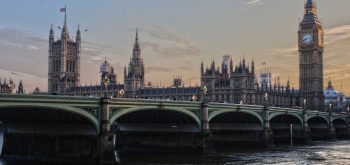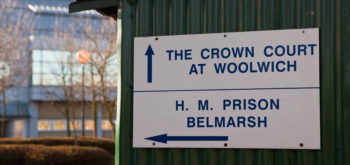There will be an increasing use of ‘remote hearings’ in the courts in England and Wales in coming weeks and months, under existing law, and under new provisions in the emergency Coronavirus Act, agreed by the House of Lords last Wednesday (25 March). But there are important practical questions to consider if we wish to safeguard open justice.
A note before I begin: I appreciate the tremendous pressure that courts and tribunals are under right now, in these unprecedented times, and difficult decisions will need to be made by civil servants, the judiciary and legal professionals. Provisions for open justice will, inevitably, fall down the list of priorities. Especially when a large proportion of court proceedings already go un-observed or reported in the media, owing to lack of resource or news interest. However, the principle of open justice is ‘paramount’ (as acknowledged in the latest guidance on civil justice) and goes beyond the news interests of the media. The possibility of observing justice is central to the rule of law and a functioning democracy. This post is an attempt to grapple with the issues around the protection and delivery of open justice in remote hearings, as digital methods are increasingly relied on in coming weeks and months. Please note, the discussion below is largely focussed on the courts in England and Wales, rather than the other UK jurisdictions.
The context — before Covid-19 emergency
Here’s what was happening — until everything got turned upside down in the last few weeks. The courts and tribunals in England and Wales were gradually adopting new forms of digital technology with the laudable goal of making the justice system more efficient, and as part of a £1 billion programme of reform.
Many of the initiatives seemed sensible and should help with the move to paperless (or paper-reduced) working, and improving efficiency of the system — making it faster to deal with cases, improve people’s access to justice, and increase the reliability of data about the justice process and outcomes.
However, many people held concerns about the way in which reform was taking place: some of the questions I and others have raised, for example, asked whether sufficient public/professional consultation and independent research had taken place before new methods were introduced, and addressed issues around equality of arms, and digital literacy (see, for e.g. evidence to the House of Commons Justice Select Committee in 2019).
An over-riding concern for many was that in the move to ‘remote’ hearings — whereby some or all participants can ‘dial’ or ‘video’ in from remote locations — the role of the public observer would be lost. How would the media, a researcher, or any ordinary member of the public observe proceedings if everything was done online? How would open justice be achieved? You can find a summary of those concerns, based on evidence to the House of Commons Public Accounts Committee in 2018 here.
Open justice may be a universal principle but it’s clear that different court types — across the different jurisdictions of civil, criminal, family and tribunals — would need a tailored approach to allow for public observation.
In the case of the family court, for example, observation by non-parties is already restricted: to ‘accredited’ press card-carrying journalists and, more recently, to legal bloggers who are legally qualified and fulfil certain conditions. Information protected by reporting restrictions is heard, but cannot be publicly reported by those present. As HMCTS official guidance states [PDF], “The media are entitled by law to hear and be present at all open court proceedings (including those with reporting restrictions in place).” In this scenario, it clearly wouldn’t be appropriate or possible to publicly live-stream most proceedings.
Viral crisis — after/during Covid-19 emergency
Then came Coronavirus, and the Government’s recommendations for increased social distancing, and, as of last week, the closure of many public venues and schools. And as of 23 March, very limited public movement at all for non-key workers. Clearly, continuing with the courts as normal is not feasible. New jury trials have been halted.
Not only would it be a risk to public health and individuals for a large number (some might contend any number) of court participants to attend court in person, but many participants will be dealing with health issues and domestic logistics — office closures and an absence of childcare, for example.
In some court contexts, there is already provision for use of video and audio methods and guidance documents from different parts of the court system have been issued, explaining how use of these will be increased in the various jurisdictions (see resources listed at end).
But in other contexts, a change in law is required to permit video and audio use. In anticipation of this, emergency measures were drafted as part of the new emergency Coronavirus Bill, which finished its passage through Parliament on 25 March, and is now an Act.
Sections 53-57 (Clauses 51–55 in the original Bill) and Schedules 23-27 (22–26 in the original Bill) widen the circumstances in which remote technology can be used in a court and tribunal setting, allow (but do not require) the court’s direction of a recording, “broadcast” or “live-stream”, and create new offences for the recording of remote proceedings. See this House of Commons Library briefing for more specific detail of amended legislation, with reference to the original Bill numbering.
As the explanatory notes set out [92–96], the Bill amended existing legislation so as to enable the use of technology either in video/audio-enabled hearings, including for a wholly video/audio hearing “where there is no physical courtroom and all participants take part in the hearing using telephone or video conferencing facilities” — i.e. fully remote hearings.
To allow (though, arguably, as drafted this won’t ensure it) open justice, provisions were also made to “enable the public to see and hear proceedings which are held fully by video link or fully by audio link” by giving discretion to the criminal, family and civil courts and tribunals to make directions to live stream a hearing which is taking place in this manner.
The impact assessment [PDF] makes clear it has been deemed that primary legislation is necessary to “enable the use of fully video and video enabled courts, so that proceedings could be conducted with all parties at remote locations” [199]. The IA does not, however, consider the implications of the measures in any detail, in relation to participants’ access to justice or other human rights. Previous concerns are alluded to but not set out:
“… Parliament and legal stakeholders have previously expressed concern about the use of fully video enabled proceedings, where all participants are remote. However, we consider that these concerns could be managed in the context of an emergency response to this public health issue.”
Essentially, it’s fast-tracking, without the time for draft legislative scrutiny as there would be in ordinary circumstances, the move to ‘remote’ or online courts in a far wider set of cases than currently permitted in law.
Some, such as Professor Richard Susskind, a champion and advisor on digital courts are relaxed about this, suggesting the sky won’t fall in.
Some reassurance. Courts will close & judges will work remotely. I've spent my working life on this (see my book, 'Online Courts and the Future of Justice') & am confident judges can deliver just decisions working online. In E&W we have been preparing @RobertBuckland @CEOofHMCTS
— Richard Susskind (@richardsusskind) March 19, 2020
Already this past week, journalists are reporting issues with accessing cases (e.g. here), which is bound to increase as cases are increasingly heard remotely, and court buildings operate reduced services. These concerns aren’t restricted to this emergency period — however long it will last — if we allow open justice to be eroded at this point, it may never be recovered.
There is concern about the range and capability of technology in place. The Public Law Project, for example, comments in its briefing on the bill [PDF, para 11]: “Providing broadcasting and/or recording capacity will be a significant challenge. We are concerned that if this technical challenge is not met, open justice will be compromised.”
Likewise, a document on the ‘remote family court’ document [v1 PDF] issued by Mr Justice MacDonald on 23 March [and updated on 25 March – v2 PDF] gives detailed and worrying insights into the technological limitations of existing technology; for example, on recording:
“With judges conducting remote hearings on a variety of platforms, on occasion without the support of court staff due closure of the court, the risk of recordings being mislaid or corrupted is high.” [5.12, p.8, v1 PDF]
The Act raises many further practical questions which I will set out below.
While some journalists have been reporting positive experiences of accessing proceedings, additional guidance to the courts and judiciary on both principle and practice will be essential to make this operate in a way that recognises the importance of open justice, access to justice and other important aspects of human rights. I urge Parliamentarians, the Judiciary, MOJ and HMCTS to consider the practical implications of the new provisions of the Act and approach already being taken, and to introduce measures and make emergency guidance that ensures open and fair justice, while protecting the administration of justice in these extraordinary times.
Practical questions in further detail
1. How will public (including media) access to court proceedings be facilitated during this emergency period, and what are the specific technology options for different court settings?
That public access to remote proceedings is provided for in the new legislation is very encouraging to see. However, the Bill documents do not offer much guidance about how it will be offered in practical terms and in different types of proceedings across the jurisdictions (criminal, civil, criminal, tribunals). The Bill documents refer interchangeably to “broadcast” and “live-stream”: are these meant synonymously or as distinct types of communication?
I can appreciate why it has been left to the court’s discretion whether a “broadcast” is ordered. I cannot see that it is feasible to broadcast to the general public many types of proceedings: for example, in the family court where stringent reporting restrictions apply, or in any case where material is subject to reporting restrictions (e.g. the name of a victim of a sexual offence which may be mentioned in open court, but is prohibited from being reported). Even if restricted material is discussed in court, the media and public is entitled to attend as made clear in HMCTS Media Guidance [p.4, PDF]:
“The media are entitled by law to hear and be present at all open court proceedings (including those with reporting restrictions in place).”
Which leads to my next query…
2. If a broadcast to the general public is not legally permissible because it contains restricted information, what other options for public/media access can be made?
In instances where restricted information prohibits a fully public broadcast, it may be appropriate to allow a small number of observers access, who are fully aware of reporting restrictions and the offence of unauthorised recording (of which they could be reminded at the beginning).
In these circumstances, as we saw in the Court of Protection last week, journalists could be allowed to join a Skype-based or other type of remote hearing — remotely, in order not to unnecessarily endanger their own or others’ health by having to attend court in person (as the HMCTS guidance of 18 March had suggested they would need to). On its site, Cloisters suggests how this could work with Microsoft Teams (in the employment tribunal, but surely applicable to other courts too).
The question here is whether the Act’s provisions provide transparency, while protecting the proper administration of justice. Do they ensure that journalists are able to listen/view court proceedings they would have otherwise been able to hear in court, had they taken place in non-emergency circumstances?
I suggest that the courts should, if a public live-stream is not feasible, make arrangements for more restricted observation (see side-effects discussed under issue 4.)
3. Will specific guidance be provided to judges and courts staff on administrating public access for remote hearings?
To accompany the provisions in the Act, I would suggest that clear, if short (given its urgency), additional and highly practical guidance to judges and relevant courts staff is essential, in each of the different jurisdictions.
This guidance should distinguish between what I shall call, first, Model A: live-broadcast or live-stream on a public platform (e.g. as we see in the UK Supreme Court or E&W Court of Appeal) and second, Model B: a limited number of public observers, such as a journalist or researcher, listening or viewing a remote hearing. Additionally, this guidance should consider whether it appropriate for the audio/video to be live transmitted or transmitted after the event and the factors that should guide that decision.
In the case of Model B, I would think there is a strong case for ensuring live observation. This guidance should emphasise open justice as a fundamental element of the Rule of Law and rights to receive information protected under Article 10 ECHR, as well as the privacy and security risks of live-broadcast. Ideally, there would be a proper impact assessment and risk assessment of the models proposed; if these arrangements are continued in the longer term, this will be a vital exercise to undertake.
4. What are the side-effects of restricting access to a small number of accredited or trusted journalists?
In terms of the side-effects (which would be addressed in a proper research-based impact/risk assessment in ideal circumstances), I am hesitant in championing Model B as it sets a worrying precedent for limiting public access to a narrow set of “accredited” journalists. This is an issue discussed by Lawrence MacNamara in 2016, following the terrorism-related trials of R v Incedal in 2014/15. After the court allowed only a small number of journalists access, he argued,
“…[W]hile the media is equated with protecting the public interest, that is far from satisfactory. The media are a proxy for the public interest but an imperfect one. Others such as civil society organisations or legal professional bodies may be interested and valuable representatives of the public interest; they should be contemplated as observers in the same way media interests are. There need to be procedures in place which ensure that there is notification to a wider body of public interest representatives and opportunities for those representatives to make submissions.”
However, in emergency circumstances, it does see better than saying well, we can’t do (Model A) live-broadcast, so we won’t do anything. And it makes sense in the family context where observation is already limited to card-carrying journalists or legally-qualified bloggers as part of the transparency pilot.
But an issue to be returned to in “normal” circumstances as it would clearly undermine a broader understanding of open justice and public access to the courts.
5. How will ‘remote proceedings’ be recorded and therefore available to parties, or observers to access after the event?
Here I think it should have been a “must” not a “may”. Is there any valid reason why recordings can’t be made of all remote proceedings, albeit there will be technological issues to overcome (as alluded to the in the ‘Family Remote Court’ document?).
This isn’t provided for in the Bill/Act, as the organisation MedConfidential’s briefing [PDF, p.2] flagged up, with regard to new provisions for detention appeal hearings. More systematic recording could be a useful by-product of the emergency circumstances; it’s something campaigners such as barrister and social enterprise founder Sophie Walker have long been calling for.
In an ideal world this would be both transcripts and audio and/or video (audio as a priority). However, if provisions for transcripts can’t be made, I think that audio is the bare minimum — a transcript can then be generated at a later date. If the court can’t provide the resource for secure digital storage, is there a role for another body here, such as the National Archives, which has vast experience of legal archiving and is home to material from past Public Inquiries, for example?
6. How will journalists or other observer know to attend a remote hearing, or challenge arrangements for a private hearing?
My understanding is that court reporters typically rely on a combination of word-of-mouth/tip-offs, and the official court lists to know whether they should attend a case.
However, the official court lists aren’t always a reliable method. Sometimes, they provide only very scant information which gives no indication as to the nature of the case; fuller information may be provided on further inquiry. Across courts, there is very mixed practice around the provision of lists to observers. Even where legally mandated, it doesn’t systematically happen across court types.
In these extraordinary circumstances, the court needs to ensure that observers — and especially journalists — are able to access court listings ahead of hearings in order to be able to request access to them (in model B described above), or view online (model A). Where appropriate and permitted, these should be “full” lists, with details of charges (in the criminal context), or the lists that are displayed in the court room each day (which I call the bare bones ones, I’m not sure of how HMCTS differentiates them in official terminology!). The recently updated (though pre-Covid 19 crisis) HMCTS Media guidancedoes talk about lists in more detail — there are complexities I haven’t addressed here.
The ‘Remote Family Court’ document [5.18, PDF] proposes that remote hearing listings and methods of joining could be advertised via the Press Association’s alert service or the PA High Court team. While this is better than no notification at all, this information won’t reach non-subscribers of the service so there needs to be an additional means of signing up for alerts by those permitted to attend and report the family courts.
My current view is that these fuller lists should be emailed to observers/journalists — publishing full online has data privacy implications that haven’t been fully subject to a risk assessment (this is something discussed in a report I wrote for the Open Government Network and Spotlight on Corruption in 2019). Likewise, journalists and observers should be able to email or ring the court to find out results of hearings.
One practical issue is one I encountered last week was struggling to have my email or call answered at a local Magistrates’ court, so couldn’t find out what hearings were taking place. I have since received a reply informing me that the court is now only hearing remand cases, that no non-essential persons will be permitted to attend (I am not clear if this includes journalists) and that nothing is being recorded or videoed. They said they were unable to send me the daily lists, though a local journalist informed me she was still receiving them (w/c 23 March). Clearly, there is an issue here for the observation and transparency of the justice system at this pressing time.
I foresee that making contact with the court in this emergency period is going to be problematic so the court needs to think about how to create a reliable mechanism for journalists to check information they would have otherwise done in person.
7. How will journalists and other observers be able to ascertain the reporting restrictions in place without physically checking at the court?
Observers, especially journalists, should be able to access details of reporting restrictions where proceedings have taken place remotely — as with court lists, consideration needs to be made if they can’t get through to the court on email or phone. And how will they be able to check with the clerk if proceedings are remote? Courts could begin publishing information on whether discretionary reporting restrictions are in place (as is done in the Scottish courts) and provide a means of follow-up for journalists to check their details (obviously the full details couldn’t be published online as that would frustrate their purpose).
8. What provision is being made for party and public access to written decisions (especially those that would otherwise have been orally delivered in open court)?
At the very least decisions should be stored by the court and made accessible on request, if not published immediately for resource reasons (anonymisation/redaction can take time). In her briefing on the Bill and the Rule of Law, TLEF research director Natalie Byrom makes a recommendation that:
“All remote hearings must be recorded, with transcripts of remote hearings being made available as soon as practicable to parties to the case and third parties. Where the recording facility fails and cannot be recovered the case should be adjourned.” [PDF, p.2].
It is not clear if extends that to sentencing remarks as well. There was a pre-existing problem with those, as highlighted in the Lammy Review into the treatment of, and outcomes for Black, Asian and Minority Ethnic individuals in the criminal justice system. Here, I hold back from recommending online publication of all sentencing remarks for the same reasons as holding back from wholesale publication of lists and results (we need a proper impact and risk assessment). They need to be accessible on request if not published online.
More work to do
This post very much reflects a work-in-progress, and evolving thoughts on this matter. Forgive the typos and any overlooked detail at this stage. Thank you to all who have engaged on this via Twitter and other channels, and for all the expertise that has been shared with me over many years in various fora and personal correspondence, and I look forward to receiving further comments/suggestions.
Further reading
- Coronavirus Bill documents: https://services.parliament.uk/Bills/2019-21/coronavirus.html
- Coronavirus Act 2020
- Judiciary links to guidance in different parts of the court system: https://www.judiciary.uk/coronavirus-covid-19-advice-and-guidance/
- House of Commons Library briefing, ‘Coronavirus Bill: implications for the courts and tribunals’ (23 March 2020) https://commonslibrary.parliament.uk/research-briefings/cbp-8865/
- HMCTS guidance mentioning physical observation for remote hearings (March 18 2020) https://www.gov.uk/guidance/hmcts-telephone-and-video-hearings-during-coronavirus-outbreak
- HMCTS Media guidance, updated March 2020, covers lists & journalists’ rights to access –https://www.gov.uk/government/publications/guidance-to-staff-on-supporting-media-access-to-courts-and-tribunals
- My paper for OGN/Spotlight on Corruption, which covers justice data issues around accessing reporting restrictions, results and lists — and the risks/benefits: Townend, J, 2019, ‘Towards a national commitment to open justice data in the United Kingdom’, Spotlight on Corruption / Open Government Network, https://www.opengovernment.org.uk/2019/10/10/why-we-need-a-national-commitment-to-open-justice-data/ / https://www.opengovernment.org.uk/wp-content/uploads/2019/10/Open-courts-final-October-2019-latest.pdf
My paper with Jason Bosland (University of Melbourne) on the basic principle and practice of open justice and challenges in the digital era: Bosland, J. and Townend, J. (2018). ‘Open justice, transparency and the media: representing the public interest in the physical and virtual courtroom’. Communications Law, 23 (4). Author version available for free via SSRN: https://papers.ssrn.com/sol3/papers.cfm?abstract_id=3336948.
Dr Judith Townend is a socio-legal researcher and a senior lecturer based at the University of Sussex. She is a member of the Transparency Project core group. Her research concerns freedom of expression and public interest journalism and recent work has focused on open justice and ‘justice data’, and the protection of journalistic sources. She began her working life in journalism, before turning to academic research and teaching. Prior to joining Sussex, she was director of the Information Law and Policy Centre at the Institute of Advanced Legal Studies, University of London. She tweets @jtownend.







